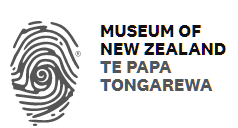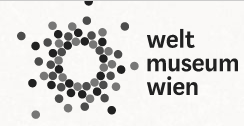National Museum of Australia
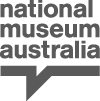
Bruce Ford established the microfading facility within the Conservation Section of the National Museum in 2008 where he was a consultant and researcher until 2023. Bruce has tested hundreds of items from the collection covering every conceivable form of media in the course of routine collection management and research. Some highlights are:
- a large range of traditional and post-colonial Australian and Torres Straits Islander Indigenous objects, including textiles, paintings, craft, drawings, hand-dyed and woven baskets and mats, ceremonial dress and documentary material. The results of this work have been published in the preprints of the ICOM-CC 16th Triennial Conference in Lisbon, Portugal, 2011.
- Azaria Chamberlain's dress
- Convict jacket, cap and shirt from the 1850s. Surprisingly little material remains from this aspect of Australia's past.
- a rare glimpse of Aboriginal life on the colonial frontier through the eyes of Indigenous artist Tommy McRae (c.1860)
- 16th and 17th C. maps speculating on the existance and nature of the Great South Land
- a pelt from the now extinct thylacine otherwise known as the Tasmanian Tiger.
- 19th C. costumes, including women's clothing from the Springfield collection.
- aquatints and watercolours
- upholstery from Australia's first Holden
- items from the Burke and Wills collection
- Little Red Riding Hood tapestry, a record for the number of different dyes in a single textile.
- Milo Dunphie's dog Dexter's boots. That's correct, dog boots for a dog, not made out of a dog.
- a complete hand painted Leyland double decker bus. Is this the largest item ever microfaded?
National Library of Australia
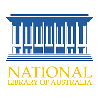
NLA treasures microfade tested include:
- Lt. James Cook's journal of his 1768–1771 voyage of discovery the Endeavour Journal, also known as Manuscript No.1 (MS-1) and one of only a handful of Australian items inscribed on UNESCO's Memory of the World Register.
- drawings from The Mabo Case Manuscripts also on the Memory of the World.
- Samples of Tapa Cloth collected by James Cook during his three Pacific voyages.
- the notorious William Bligh's diary during his extraordinary open boat voyage following the Mutiny on the Bounty.
- the manuscript of Australia's unofficial national anthem, Banjo Patterson and Christine McPherson's Waltzing Matilda. Try Tom Waits version.
- Wills diary from the ill-fated Burke and Wills expedition of 1860-61 .
- the 1788 Hunter Sketchbook depicting Australian fauna and flora
- hand-drawn felt pen and fluorescent highlighter maps from the Mabo Collection; also on the Memory of the World register.
- John Lewin's Birds of New Holland; Australia's first bird book.
- Governor Arthur's 1830 comic strip Proclamation outlining the legal position of Aborigines in the new colony of NSW.
- Hendrik Donker's1659 Sea Atlas from the golden age of Dutch mapmaking.
- an illuminated book of hours from c.1400.
- The Port Jackson Painter watercolours.
- William Westward watercolours
- Matégot Tapestries
National Archives of Australia

- Australia's Constitution and the associated Royal Proclomation and Royal Commission of Assent, signed by Queen Victoria in 1900.
- Walter Burley and Marion Mahony Griffin Design Drawings of the City of Canberra and other plans and paintings from the 1912 competition to design a new capital city for Australia. These are also inscribed on UNESCO's Memory of the World list.
- Sir Douglas Mawson's hand-written1930 Proclamation, perhaps better described as an ambit claim by Australia for possession of vast swathes of Antarctica.
- a set of documents produced by various office copy processes including Thermofax (as used by Andy Warhol and Gerard Melanga, spirit duplicating, blueprints, thermal printer and various photo-sensitive processes. See the book by Ian Batterham of the NAA, The Office Copying Revolution: History, identification and preservation. Available from NAA. This has resulted in a publication by Bruce Ford and Ian Batterham Accelerated fading of some historic office copy documents. Contributions to On Paper? The 8th AICCM Book, Paper and Photographic Materials Symposium, Art Gallery of New South Wales, 7-9th May 2014, pp 14-20.
Archives New Zealand / Te Rua Mahara o te Kāwanatanga

- The Treaty of Waitangi documents (1840). The foundation document of bicultural NZ. Inscribed on UNESCO's Memory of the World register.
- The Declaration of Independence of the Northern Chiefs (1835)
- The Women's Suffrage Petition (1893). NZ women the first to win the vote for a national government in the world.
- other documents including Captain William Hobson’s Appointment as Lieutenant Governor of New Zealand (1839);
Lieutenant-Governor of New Ulster and New Munster and original drawings of different versions of NZ's coat of arms.
_
Tate Gallery, London

- Bruce worked with the Tate during the second half of 2011 on a project investigating the use of low oxygen environments to retard light-fading in works of art on paper. The Tate held a symposium on anoxia and microfading in September 2011 for which videos of presentations can be found here.
- In the course of this project he test-faded works by artists including William Blake, Cy Twombly, Eva Hesse, Andy Warhol, Edouard Vuillard, Pablo Picasso, Paul Klee, Francis Bacon, Eduardo Paolozzi, Walter Sickert and other Camden Town artists. The works tested contained many interesting materials from a fading perspective, including: textile dyes, fluorsecent, ball point, irongall, commercial printing, drafting and lithography inks.
National Galleries Scotaland

- Provided purchasing, on-site equipment setup and training for NGS in Oct-November 2012. NGS in turn intend to share their new microfading capacity with other cultural institutions in the region.
- Returned November 2013 to participate in a project with the National Galleries, National Archives, National Library and National Museum of Scotland. This involved examining selected collection material from each of the participating institutions and the development of appropriate lighting guidelines.
Artlab Australia

- The Eureka Flag as part of Artlab's recent conservation of what is (arguably) Australia's most potent political symbol (Google it).
Australian Parliament House
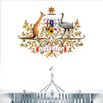
- the Great Hall Tapestry by Arthur Boyd and the Melbourne Tapestry Workshop
National Portrait Gallery

- tapestry portrait of Rupert Murdoch's mum, Dame Eizabeth Murdoch, by the Melbourne Tapestry Workshop
- a lenticular print of scientist Douglas Waterhouse by Robyn Stacey
National Gallery of Australia

- Adelaide artist Hossein Valmanesh's Practice, a work on paper in saffron.
- a series of early 20th C. woodblock prints by the Japanese artist, Natori Shunsen
The Solomon R Guggenheim Museum

- Paul Klee; The Bavarian Don Giovanni
- Vasily Kandinsky; Accompanied Contrast, Improvisation 28
- Victor Vasarely; Lacerta
- Robert Morris; Pink Felt
- Paul Klee: Arches of the Bridge Stepping Out of Line
- Kurt Schwitters; The Red Bon Bon (Merz 53)
- Roni Horn, Dead Owl
- Plus Ana Mendieta, Mel Ramos, Vincent van Gogh
Museum of Australian Democracy

- satirical puppet of Sir John Kerr, perhaps Australia's most controversial public figure of the past 40 years
- Suffragette material including the Pank-a-Squith board game and ‘Votes for Women’ suffragette stockings
- a range of other rare documentary, textiles and visual material.
Australian War Memorial

- documents and textiles relating to WW1
Sydney Living Museums (AKA NSW Historic Houses Trust)

Furnishings and other material from Rouse Hill house and farm.
National Gallery of Victoria

- The Fligt Into Egypt: (1510) Tapestry, Flanders
- Chair (1902) Carlo Bugatti, Italy
- Catching Butterflies (1890's) Collotype, KajimaSeibei Studio (attributed), Japan.
- Portrait of a man (1843). Salted photograph, William Henry Fox Talbot, England
- Notre Dame (1849) Photograph, Henry Le Secq, France
- The Metropolitan (1988) Costume, Leigh Bowery, Australia
- Susu Mask (c.1980), Sulka people, Wide Bay, East New Britain Province, Papua New Guinea
- and others. An interesting job, 16th C tapestry to haute cuture and some surprises
- Paola Pivi Bears (2014)
Museum Victoria
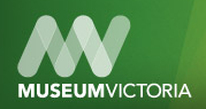
March 2013. Various items including the jumper worn by Aboriginal St. Kilda AFL player, Nicholas Winmar when he made his
famous response to racist taunting by lifting the jumper and pointing to his skin.
January 2016. Installation of a microfader and training. MV have "permanent" exhibitions lasting 10 to 15 years which are keyed into school curricular. Like the NMA, microfading helps to avoid expensive object changeovers based on frequently conservative estimates of lightfastness or no information at all.
famous response to racist taunting by lifting the jumper and pointing to his skin.
January 2016. Installation of a microfader and training. MV have "permanent" exhibitions lasting 10 to 15 years which are keyed into school curricular. Like the NMA, microfading helps to avoid expensive object changeovers based on frequently conservative estimates of lightfastness or no information at all.
Art Preservation Services NYC
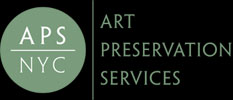
December 2013. Installation of microfader and training. APSNYC who under the direction of Steven Weintraub have the conservation contract for the 9/11 Memorial Museum in NY City, are currently using the determine the light-fading risk for collection material; particularly messages, logos and other potentially vulnerable ephemera attached to "The Last Column".

January 2014. nstallation of microfader and training. The method will be first used on a collaborative
project - the effects of light ageing on fibre used in Māori textile
artefacts - where light-ageing, tensile testing and raman spectroscopy are being
used to asses the effects of museum lighting conditions on traditionally-dyed
Māori textiles.

March 2014. Lightfastness assessments of William Morris tapestries and cotton print fabrics. Technically William Morris is interesting because he rejected synthetic dyes in favour of the medieval dyes he loved and because the dyes he used may have different lightfastness on cotton than on wool, silk or cotton. This project concentrated on three of the 6 tapestries produced by William Morris on wool and silk known as The Holy Grail Tapestries. They were commissioned by William Knox D'arcy in 1890 for his residence at Stanmore Hall and designed by the Pre-Rapaelate artist Edward Burne-Jones with textile designer JH Dearle. The examples tested were Knights of the Round Table Summoned to the Quest by the Strange Damsel, The Arming and Departure of the Knights, Verdure with Deer and Shields & . Selected cotton print samples printed by Morris & Co were also tested, for example "Eyebright".

April 2014. A range of items to be found at the Museum of Liverpool, the World Museum and the Lady Lever Art Gallery. These included the pre Hispanic Codex Fejérváry-Mayer, an exceedingly rare Aztec book from central Mexico painted in various pigments on 23 pages of deer skin parchment joined together and folded like an accordian. The codex had previously been scientifically analysed by the Italian MOLAB team and it was interesting to work on such a well characterised object. In addition to the pigments Mayan blue, orpiment, carbon (lamp black), and cochineal the MOLAB team detected the presence of organic dyes that could not be identified, but which were of serious concern in terms of fading. Other objects and works of art included the yellow jersey won by Liverpool cyclist Chris Boardman, handwritten (ballpoint pen) lyrics by Peter Hooten from the Liverpool band The Farm, Edward Burne-Jones's Angel Playing a
Flageolet and Joshua Reynolds portrait Mrs James Fortescue, née Mary Henrietta Hunter among many other objects and works of art.
Det Kongelige Bibliotek (Royal Library of Denmark)

October 2014. Installation of microfader and training . The capability will be used to conduct lightfastness evaluations of valuable manuscripts, photographs, book-bindings and other materials destined for display as well as research into the lightfastness of particular aspects of their collection including, for example, illuminated manuscripts.
Heritage Conservation Centre (National Heritage Board) Singapore

April 2016 Installation and training. The HCC services the conservation needs of all of Singapore's museums. Two paper and two textile conservators are now trained to use the microfader.
Auckland War Memorial Museum:Tamaki Paenga Hira

April 2017. Installation and training. Used for assessing lightfastness of objects destined for exhibition.
Museum of Transport and Technology, Auckland New Zealand

MFT installation and training
Royal Alberta Museum, Canada

MFT installation and training
